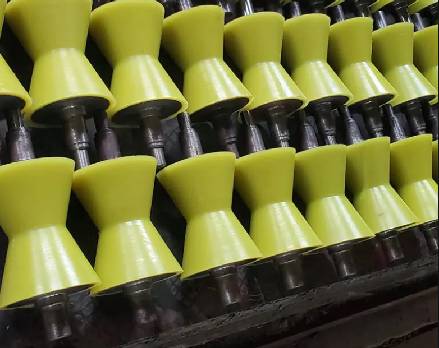 Afrikaans
Afrikaans  Albanian
Albanian  Amharic
Amharic  Arabic
Arabic  Armenian
Armenian  Azerbaijani
Azerbaijani  Basque
Basque  Belarusian
Belarusian  Bengali
Bengali  Bosnian
Bosnian  Bulgarian
Bulgarian  Catalan
Catalan  Cebuano
Cebuano  Corsican
Corsican  Croatian
Croatian  Czech
Czech  Danish
Danish  Dutch
Dutch  English
English  Esperanto
Esperanto  Estonian
Estonian  Finnish
Finnish  French
French  Frisian
Frisian  Galician
Galician  Georgian
Georgian  German
German  Greek
Greek  Gujarati
Gujarati  Haitian Creole
Haitian Creole  hausa
hausa  hawaiian
hawaiian  Hebrew
Hebrew  Hindi
Hindi  Miao
Miao  Hungarian
Hungarian  Icelandic
Icelandic  igbo
igbo  Indonesian
Indonesian  irish
irish  Italian
Italian  Japanese
Japanese  Javanese
Javanese  Kannada
Kannada  kazakh
kazakh  Khmer
Khmer  Rwandese
Rwandese  Korean
Korean  Kurdish
Kurdish  Kyrgyz
Kyrgyz  Lao
Lao  Latin
Latin  Latvian
Latvian  Lithuanian
Lithuanian  Luxembourgish
Luxembourgish  Macedonian
Macedonian  Malgashi
Malgashi  Malay
Malay  Malayalam
Malayalam  Maltese
Maltese  Maori
Maori  Marathi
Marathi  Mongolian
Mongolian  Myanmar
Myanmar  Nepali
Nepali  Norwegian
Norwegian  Norwegian
Norwegian  Occitan
Occitan  Pashto
Pashto  Persian
Persian  Polish
Polish  Portuguese
Portuguese  Punjabi
Punjabi  Romanian
Romanian  Russian
Russian  Samoan
Samoan  Scottish Gaelic
Scottish Gaelic  Serbian
Serbian  Sesotho
Sesotho  Shona
Shona  Sindhi
Sindhi  Sinhala
Sinhala  Slovak
Slovak  Slovenian
Slovenian  Somali
Somali  Spanish
Spanish  Sundanese
Sundanese  Swahili
Swahili  Swedish
Swedish  Tagalog
Tagalog  Tajik
Tajik  Tamil
Tamil  Tatar
Tatar  Telugu
Telugu  Thai
Thai  Turkish
Turkish  Turkmen
Turkmen  Ukrainian
Ukrainian  Urdu
Urdu  Uighur
Uighur  Uzbek
Uzbek  Vietnamese
Vietnamese  Welsh
Welsh  Bantu
Bantu  Yiddish
Yiddish  Yoruba
Yoruba  Zulu
Zulu Side Guidance Rollers for Conveyor Belt Systems for Enhanced Stability and Performance
Understanding Conveyor Belt Side Guide Rollers
Conveyor systems are essential in various industries, facilitating the efficient movement of goods and materials. One critical component of these systems is the side guide rollers, which play a significant role in ensuring smooth and safe operation. This article delves into the functionality, importance, and maintenance of conveyor belt side guide rollers.
What Are Side Guide Rollers?
Side guide rollers are components attached to conveyor systems to support and guide the belt along its path. They are typically positioned at the sides of the conveyor to help maintain belt alignment, preventing it from veering off track. This alignment is crucial for ensuring that the products being transported remain stable, reducing the risk of spillage or damage.
Importance of Side Guide Rollers
1. Belt Alignment One of the primary functions of side guide rollers is to maintain the proper alignment of the conveyor belt. Misalignment can lead to uneven wear, which not only shortens the lifespan of the belt but can also result in costly repairs or replacements.
2. Safety Keeping the conveyor belt properly aligned reduces the risk of accidents in the workplace. A misaligned belt can cause products to fall off the conveyor, posing safety hazards to workers and disrupting operational efficiency.
3. Reduction of Wear Side guide rollers help to minimize friction and wear on the conveyor belt. By offering support along the belt's edges, they allow for smoother movement, which is especially important for systems that operate at high speeds.
4. Enhanced Performance With properly functioning side guide rollers, the entire conveyor system performs more efficiently. Products move seamlessly from point A to point B, resulting in increased throughput and productivity.
Types of Side Guide Rollers
Side guide rollers come in various designs, depending on the application and the specific needs of a conveyor system
. Some common types includeconveyor belt side guide rollers

- Fixed Rollers These are stationary and set at a fixed distance from the belt. They provide consistent support for the belt edges.
- Adjustable Rollers These allow operators to adjust the position of the rollers according to the width of the conveyor belt, providing versatility for different product sizes.
- Bearing Rollers These include built-in bearings to reduce friction, enhancing the performance of the conveyor system.
Maintenance Considerations
Maintaining conveyor belt side guide rollers is essential for ensuring their longevity and effective performance
1. Regular Inspections Regularly inspect the guide rollers for signs of wear or damage. Look for issues such as deformation, cracking, or excessive buildup of debris.
2. Lubrication Proper lubrication of the rollers, particularly those with bearings, is crucial to minimize friction and wear. Follow the manufacturer's recommendations for lubrication intervals.
3. Cleaning Keep the rollers clean to prevent material buildup, which can interfere with the roller's movement and lead to misalignment.
4. Alignment Checks Periodically check the alignment of both the conveyor belt and the side guide rollers. This is essential to ensure the system operates smoothly and safely.
Conclusion
In conclusion, conveyor belt side guide rollers are vital components that contribute significantly to the efficiency and safety of conveyor systems. Their role in maintaining belt alignment, ensuring safety, reducing wear, and enhancing overall performance cannot be overstated. By understanding their importance and investing in regular maintenance, industries can maximize the lifespan of their conveyor systems and improve productivity. As technology advances, innovations in side guide roller design and materials are likely to further enhance their functionality, ensuring that conveyor systems remain a cornerstone of modern logistics and manufacturing.
-
Revolutionizing Conveyor Reliability with Advanced Rubber Lagging PulleysNewsJul.22,2025
-
Powering Precision and Durability with Expert Manufacturers of Conveyor ComponentsNewsJul.22,2025
-
Optimizing Conveyor Systems with Advanced Conveyor AccessoriesNewsJul.22,2025
-
Maximize Conveyor Efficiency with Quality Conveyor Idler PulleysNewsJul.22,2025
-
Future-Proof Your Conveyor System with High-Performance Polyurethane RollerNewsJul.22,2025
-
Driving Efficiency Forward with Quality Idlers and RollersNewsJul.22,2025





























